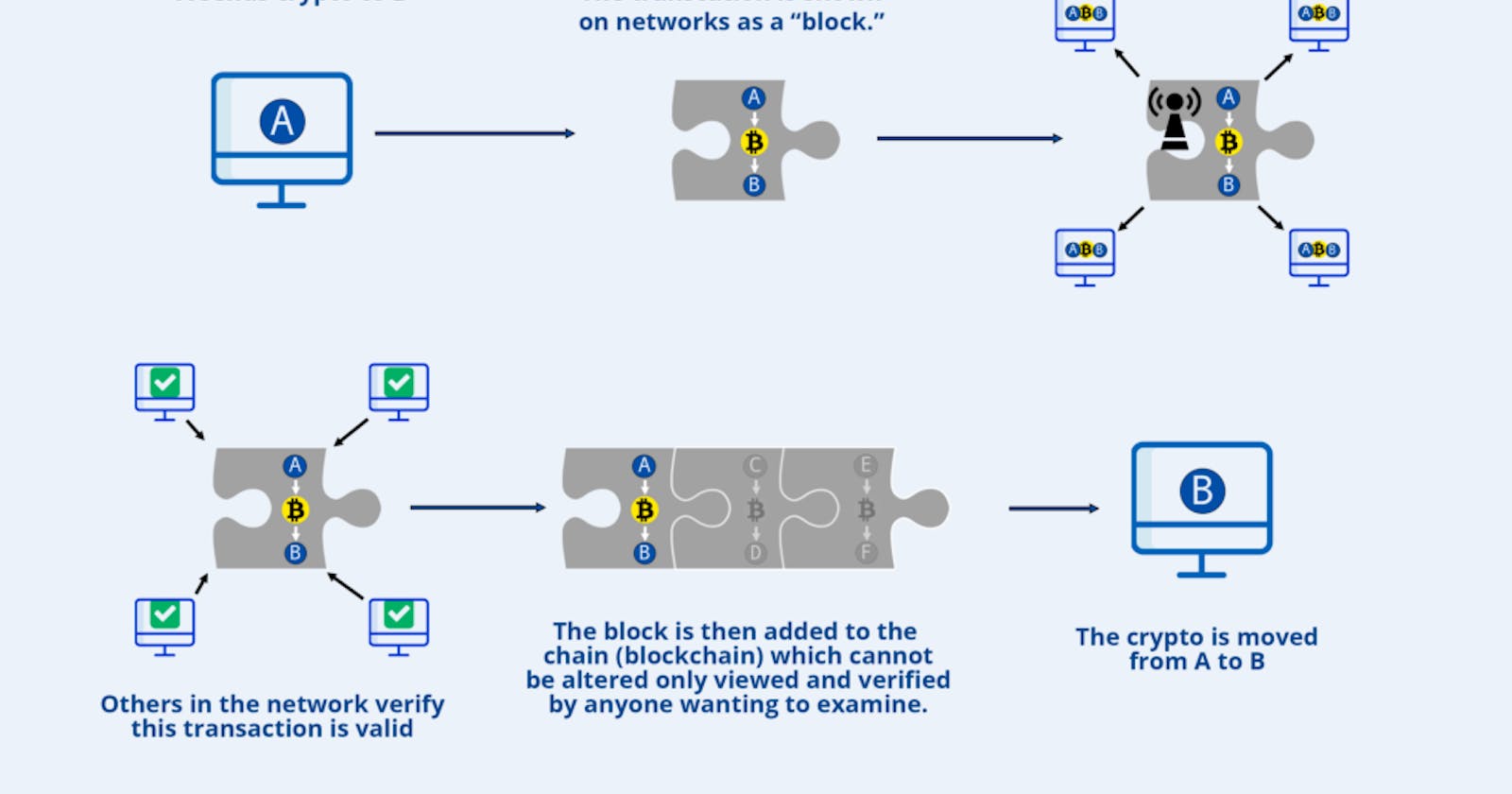Decoding Blockchain: A Beginner's Introduction to the Revolutionary Technology Changing the World

Understanding The Technology Behind Cryptocurrency
Blockchain started in 1991 as a way to store and secure digital data. Blockchain is an open ledger that several parties can access at once. One of its primary benefits is that the recorded information is hard to change without agreement from all parties involved. It was Majorly created in 2008 as the underpinning technology behind the digital currency, Bitcoin. Since also, blockchain has been espoused for a wide range of utilities beyond just cryptocurrency.
Blockchain is a digital tally that records transactions across a network of computers. Each block in the chain contains several transactions, and formerly a block is added to the chain, it can not be altered. This creates an endless, tamper-evidence record of all transactions on the blockchain. One of the crucial benefits of blockchain technology is its capability to grease peer-to-peer deals without the need for a central authority.
This eliminates the need for interposers similar to banks or payment processors, which can greatly reduce sale freights and increase security. Another benefit of blockchain is its translucency. All transactions on a blockchain are easily accessible and intimately viewable. One of the most well-known operations of blockchain technology is cryptocurrency.
Bitcoin was the first digital currency to use blockchain technology and it's still the most extensively used. Currently, there are now thousands of other cryptocurrencies that use blockchain technology, including Ethereum, Litecoin, and Ripple. Blockchain technology is being explored in a wide range of other diligence, including force chain operation, advancing systems, and real estate.
To learn further about blockchain technology, it's recommended to exploration about it, watch youtube videos, join communities and attend events related to the Blockchain.
Benefits Of Blockchain
Decentralization
One of the key features of blockchain technology is that it is decentralized, meaning it is not controlled by any single entity. This eliminates the need for intermediaries such as banks or payment processors and can greatly reduce transaction fees.
Transparency
Transactions on a blockchain are publicly viewable, traceable and unchangeable, for accountability and trust among users.
Smart Contracts
Blockchain allows for the creation of smart contracts, which are self-executing contracts with the terms of the agreement directly written into code. This can greatly simplify legal agreements and business processes.
Efficiency
Blockchain technology can automate and streamlines processes, reducing the need for intermediaries, this way it increases speed and efficiency.
Decentralized Applications
Blockchain technology enables the creation of decentralized applications that run on a blockchain network, providing a more secure and transparent alternative to traditional centralized applications.

Blockchain Beyond Bitcoin
Cryptocurrencies
Blockchain technology is the foundation for many digital currencies such as Bitcoin, Ethereum, and Litecoin.
Decentralized Finance (DeFi) platforms
These platforms allow for decentralized lending, borrowing, and trading of digital assets. we have several DEX platforms among them we have Uniswap, Pancake Swap and many more.
Digital wallets
These are software programs that allow individuals to securely store and manage digital assets such as cryptocurrencies either on a Centralized platform or a Decentralized one like Trustwalletsor Metamask, etc.
Blockchain-based remittances
These are platforms that allow for the efficient and cost-effective transfer of money across borders.
Gaming
Blockchain technology is increasingly being used to create decentralized, blockchain-based gaming platforms and in-game assets.
Digital Collectibles(NFT)
Blockchain technology can be used to create unique digital assets such as digital art, music, and videos that can be collected and traded on the blockchain. The most common one, Non-fungible tokens (NFTs). They are cryptographic assets on a blockchain with unique identification codes and metadata that distinguish them from each other. Unlike cryptocurrencies, they cannot be traded or exchanged at equivalency.
Healthcare
Blockchain technology can be used to securely store and share patient data and medical records, allowing for more efficient and secure healthcare systems.
Conclusion
Blockchain technology has the potential to revolutionize the way we conduct transactions, and store and share data. Its decentralized nature and ability to automate processes make it a valuable tool in various industries, including finance, gaming, and healthcare. As the technology continues to evolve and more uses are discovered, it is important to stay informed and educated about the possibilities and limitations of blockchain technology.
